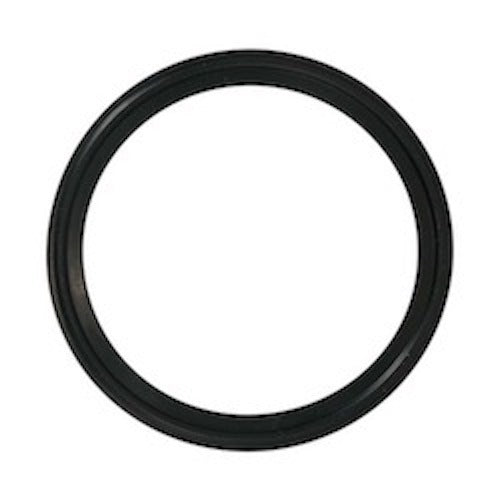6" EPDM Tri-Clamp Gasket
3-A Sanitary Certified
Material:
Size: 6 inch
Connection Type: Tri-Clamp
Surface Finish:
Weight: 0.03 lbsSKU: Item #: E6TCG5
In Stock
Couldn't load pickup availability

Collapsible content
Description
Our 6 inch EPDM tri-clamp gasket, is a sanitary, synthetic rubber gasket designed to ensure tight, leak-proof connections between various pipe components, valves, and other fittings in sanitary systems. EPDM delivers excellent UV, temperature, and chemical resistance, making it perfect for outdoor applications.
The gasket fits between two surfaces (such as flanges or fittings) to create a seal that prevents leaks. The design ensures that it doesn’t trap bacteria or contaminants, which is crucial in sanitary applications. The surfaces in contact with the gasket are usually smooth, to reduce the risk of contamination.
FDA Compliant Materials USP Class VI Tested
We offer tri-clamp gaskets in a variety of sizes and materials.
EPDM stands for Ethylene Propylene Diene Monomer.
Uses:
Dairy
Meat
Beverage
Wine
Breweries
Cosmetics
Pharmaceuticals
Reverse osmosis systems
Essential oils
Juice
Aquaponics
And more
Specs
304 vs. 316L Stainless Steel
304 and 316L stainless steels appear visually identical, but have distinct performance characteristics.
304 stainless steel contains approximately 18% chromium and 8% nickel, making it suitable for kitchen applications and indoor environments. It performs well under normal conditions but becomes vulnerable to corrosion when exposed to salt or harsh chemicals. This makes it the more economical option for standard uses where corrosion resistance is not a primary concern.
316L stainless steel contains 2-3% molybdenum in addition to chromium and nickel, providing superior corrosion resistance, especially against saltwater and chemicals. Furthermore, 316L has a lower carbon content than 316, increasing corrosion resistance and making it ideal for welding. While it commands a higher price point than 304, it is recommended for outdoor marine environments and food processing applications involving salt.
304 is useful for some standard applications, but for the highest level of durability and harsh environments or saltwater exposure, the additional investment in 316L stainless steel is justified for long-term success.
